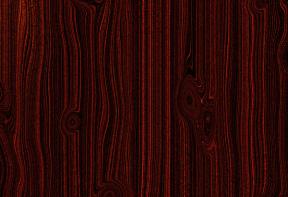Restoration Workshop: Darkening wood
Using ammonia to darken wood
Fuming with ammonia is a technique used primarily by furniture builders. The process of changing the colour of wood by exposing it to ammonia fumes can give wood a rich hearty tone that is almost impossible to duplicate with conventional finishing techniques — which makes it perfect for building antique style projects. But fuming is also a technique that can come in handy for a furniture restoration project as well.
For instance, a job in which all the pieces of the project (a dinette suite, perhaps) were originally coloured by a stain that was mixed in with the finish. In such a case all the colour would be removed in the stripping process. Once all the original colour is stripped away these pieces would be perfect candidates for fuming.
The setup: Industrial furniture makers use industrial strength ammonia, but household ammonia works too — it just takes a little longer. And a ‘fuming chamber’ may sound exotic, but all you need is a duct tape-sealed Rubbermaid container for small projects
Or a job requiring new parts (a missing rung on a chair), and the wood colour has accumulated from natural aging (no stain was used).
Why bother fuming? Why not just use a stain? Because there are some definite advantages to fuming. The biggest advantage is the ammonia fumes work all by themselves. You can be doing other things while the wood is being coloured. Fumed wood is also incredibly uniform in colour. There are no problems with blotchy stain application and no drips to mar the finish.
One other characteristic of fumed wood is obvious in open porous woods like oak. Stain tends to collect in the pores making them very dark in comparison to the surrounding wood; the grain really stands out. Fuming tends to colour everything uniformly, leaving the wood much more natural looking. Depending on the desired result, fuming can give you exactly the tone you’re looking for.
Ammonia fumes work in combination with the tannin already in the wood. Oak normally has a lot of tannin in it, however not all species have tannin and the ones that do can have different levels of the stuff. If you happen to be refinishing a project that has low levels of tannin and you’d like to darken it, you can add tannin to the wood. Water-soluble tannin, or tannic acid, is available in powdered form from scientific chemical suppliers.
Not sure? Do a test. Make a saturated solution of tannic acid and apply it, with a foam brush, to one of two scrap pieces of the desired species. Let it dry overnight. Fume both (see procedure below) and see which one comes closets to the look you’re trying to achieve.
Safety: In order to fume wood safely, there are four requirements. All are equally important and absolutely necessary. The first is a good fitting respirator with ammonia filter cartridges. Regular cartridges are not good enough. Ammonia filter cartridges are available at most safety equipment stores. The second is a tight fitting pair of goggles (not safety glasses) to protect your eyes from the fumes (try swimming goggles). The third is a pair of rubber safety gloves. And the fourth is an airtight fuming chamber. This can be as simple as a plastic garbage container sealed with duct tape for small pieces, or the back of a rented cube van for the larger pieces. The fumes will disperse after a couple of hours and won’t hurt the van.
Jump to a section
- Page 1 : Ammonia fuming 101
- Page 2 : Ammonia fuming how-to
To leave a comment, please log in












No comments